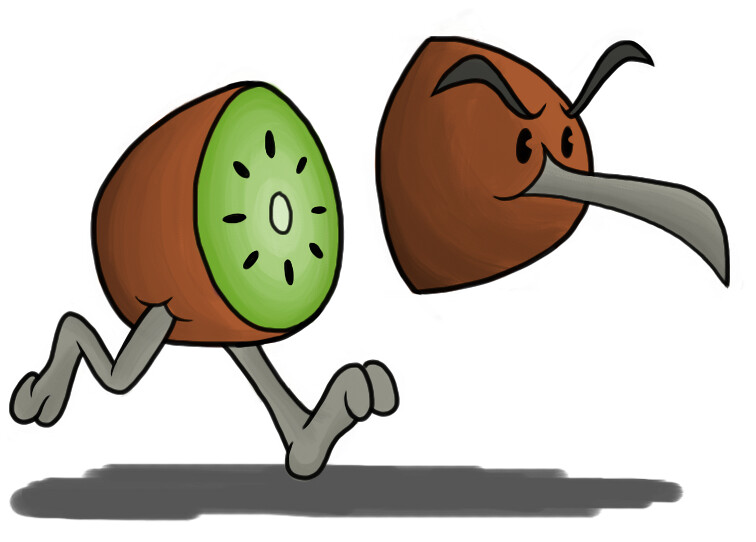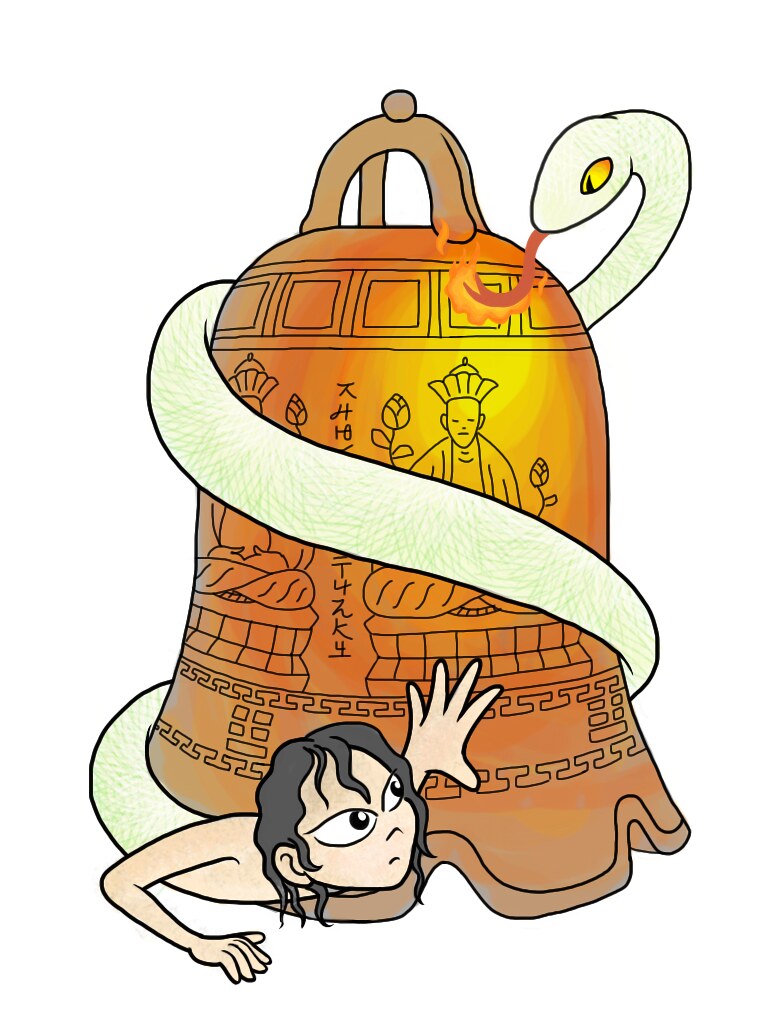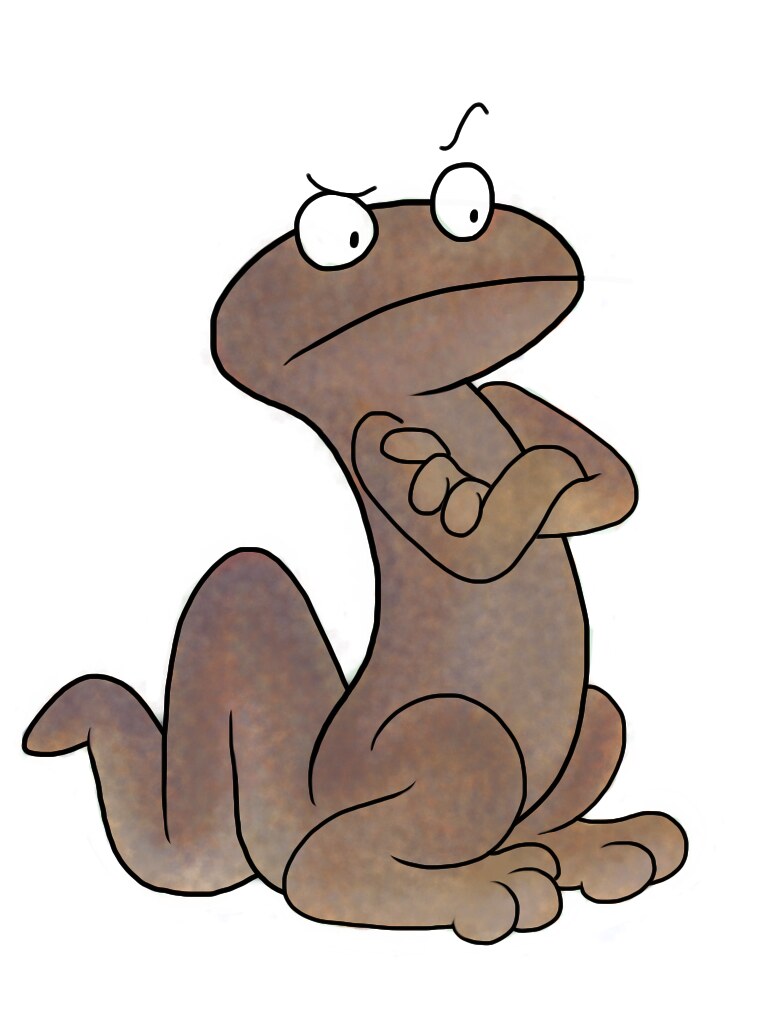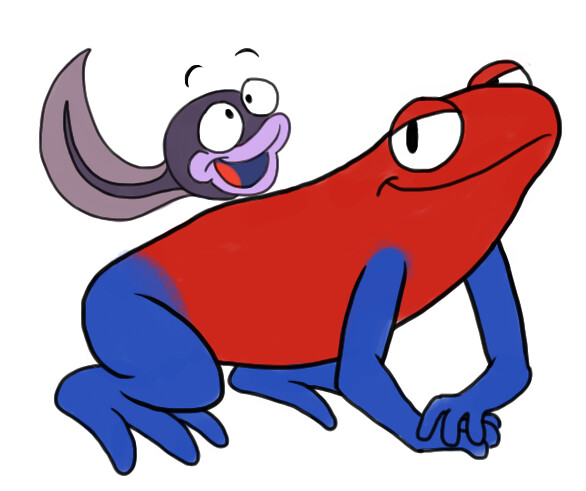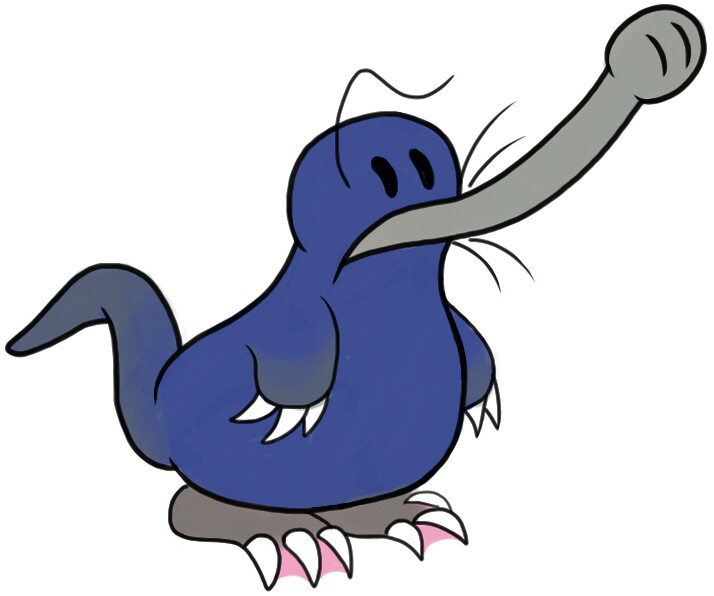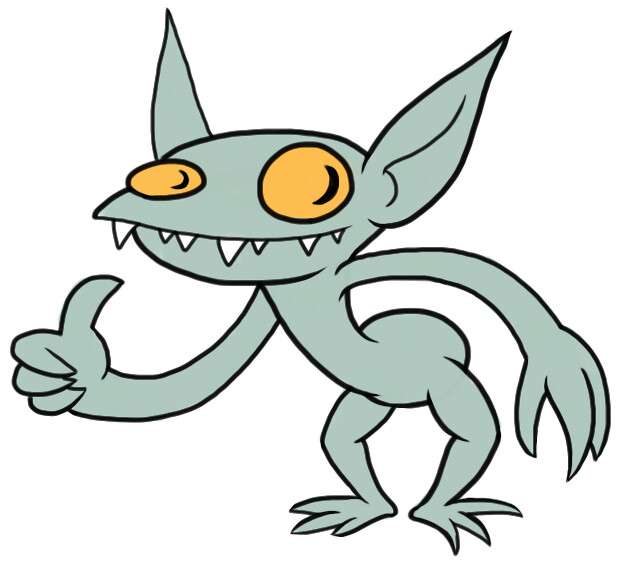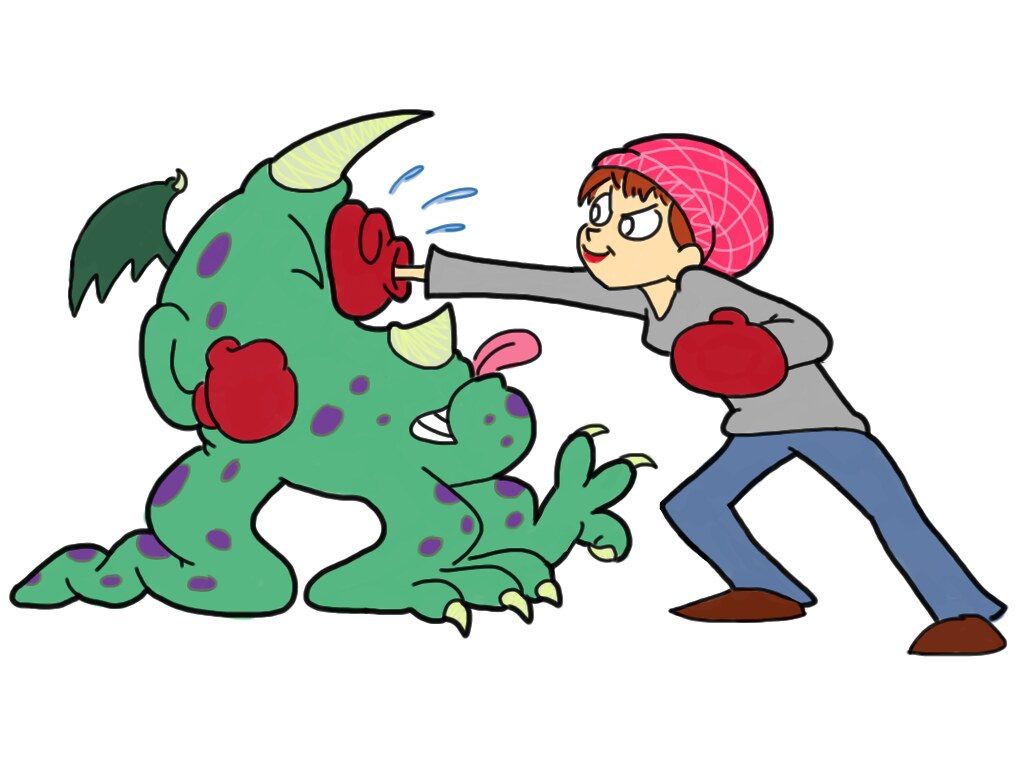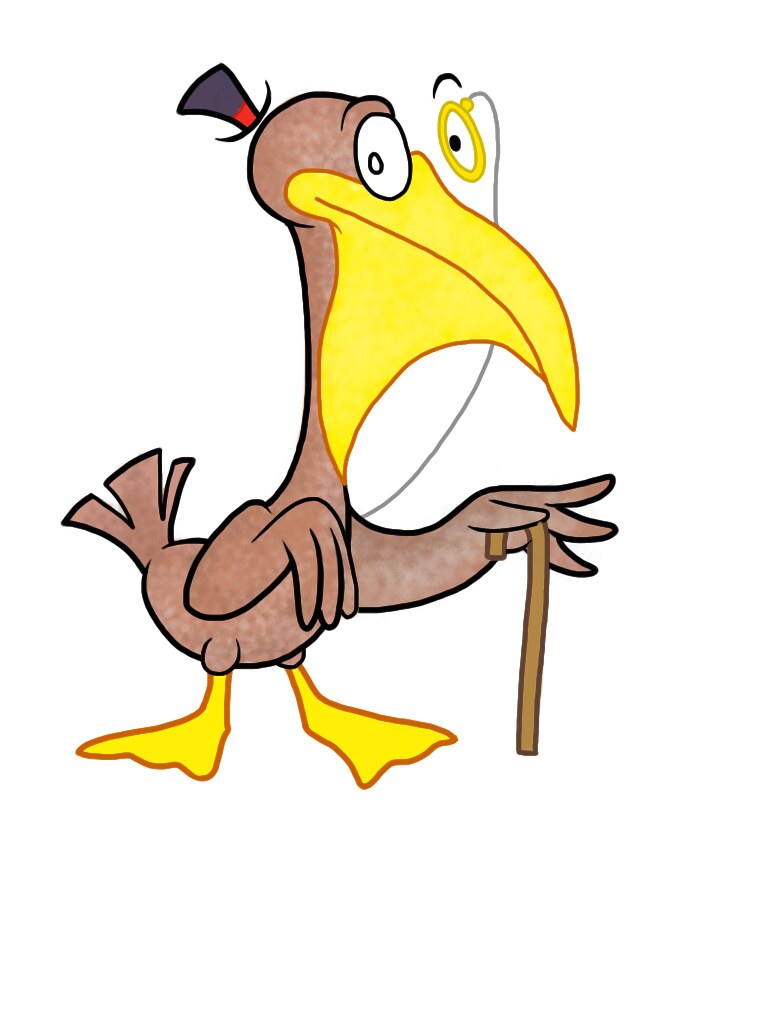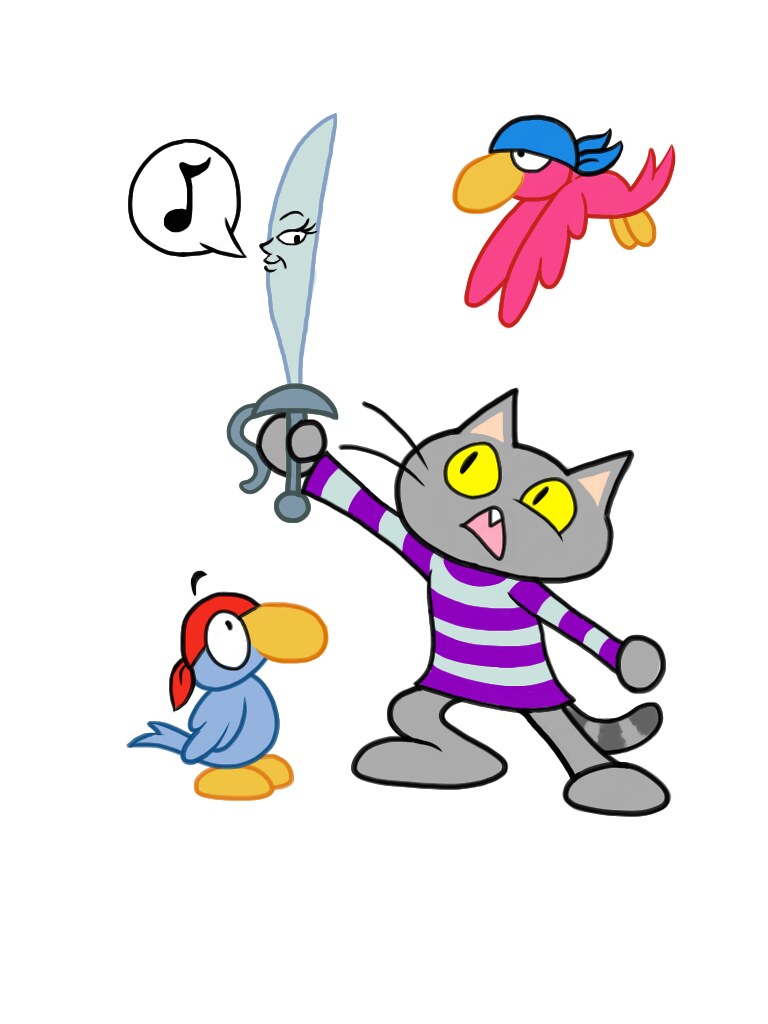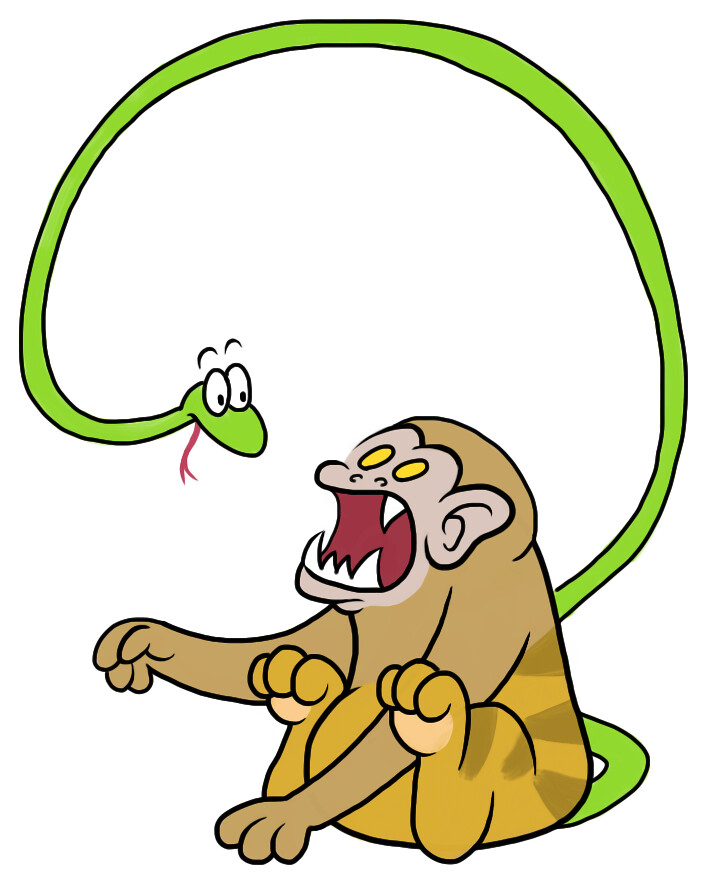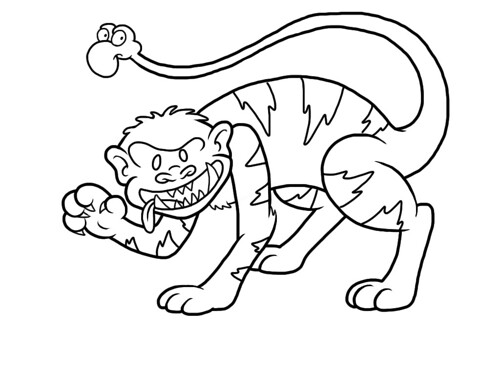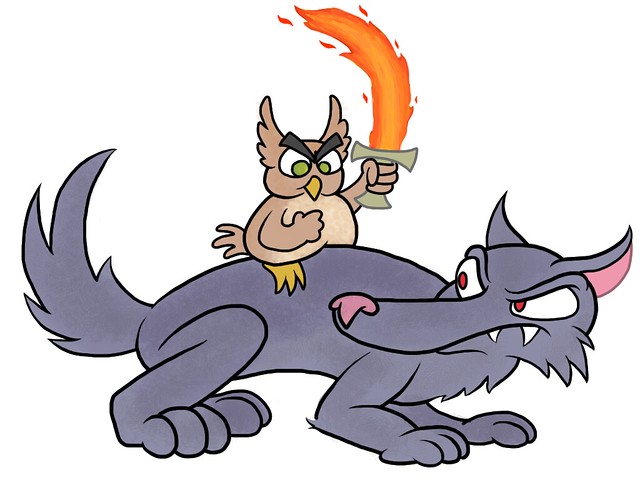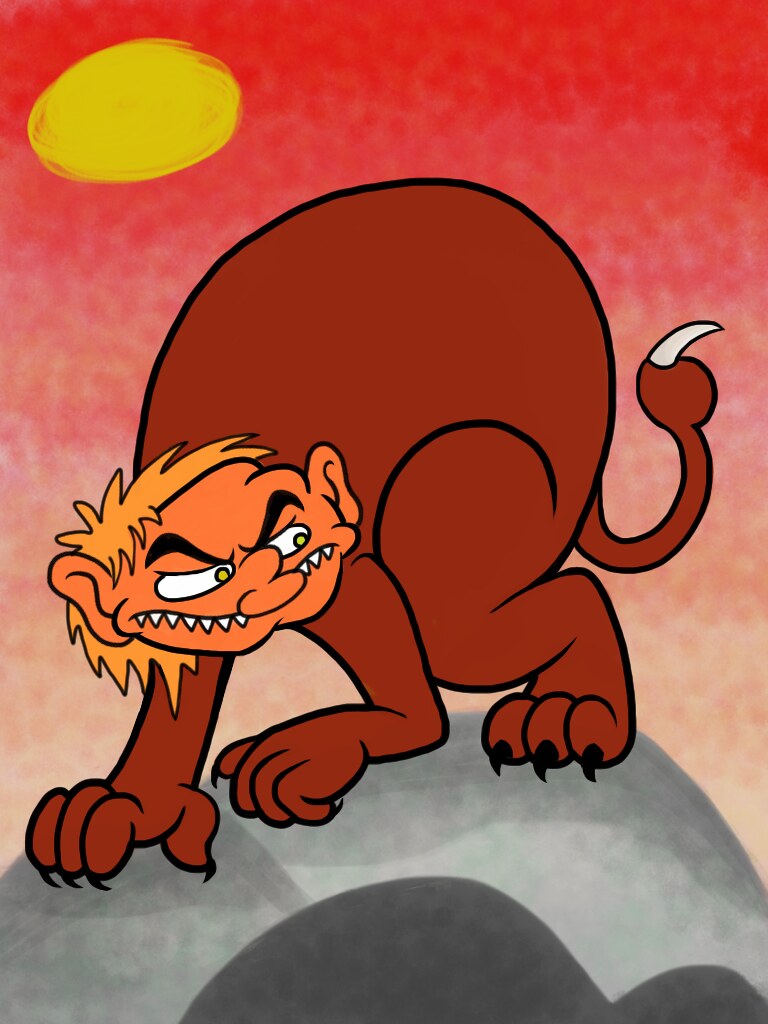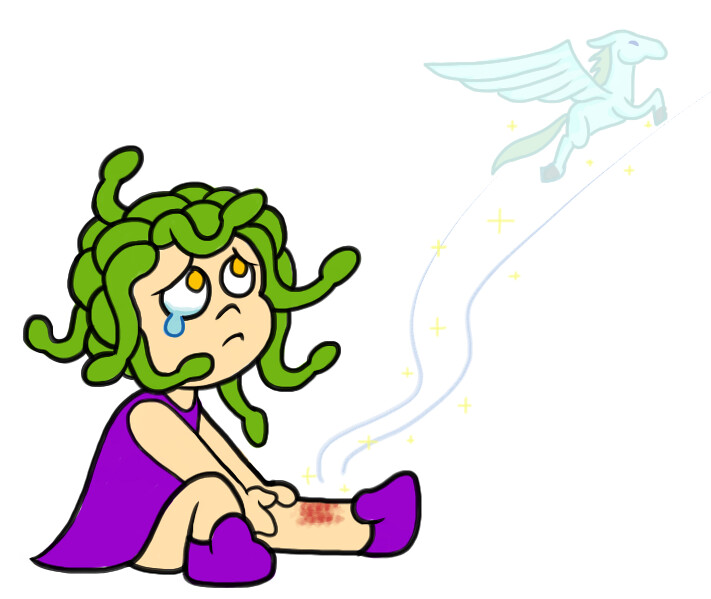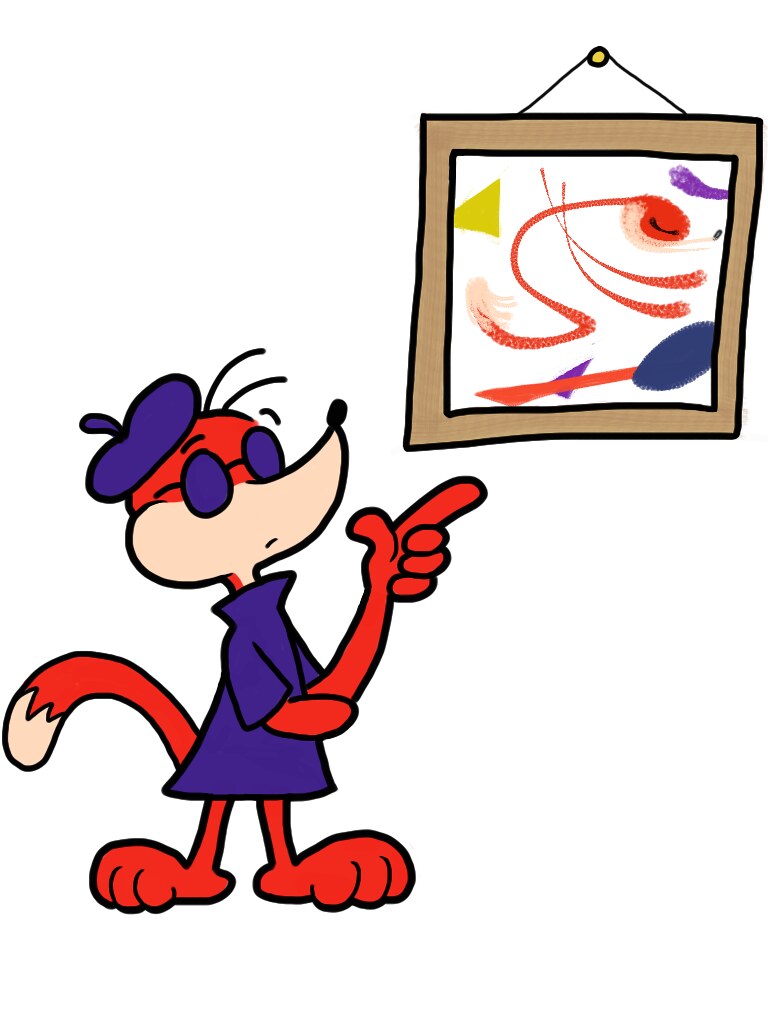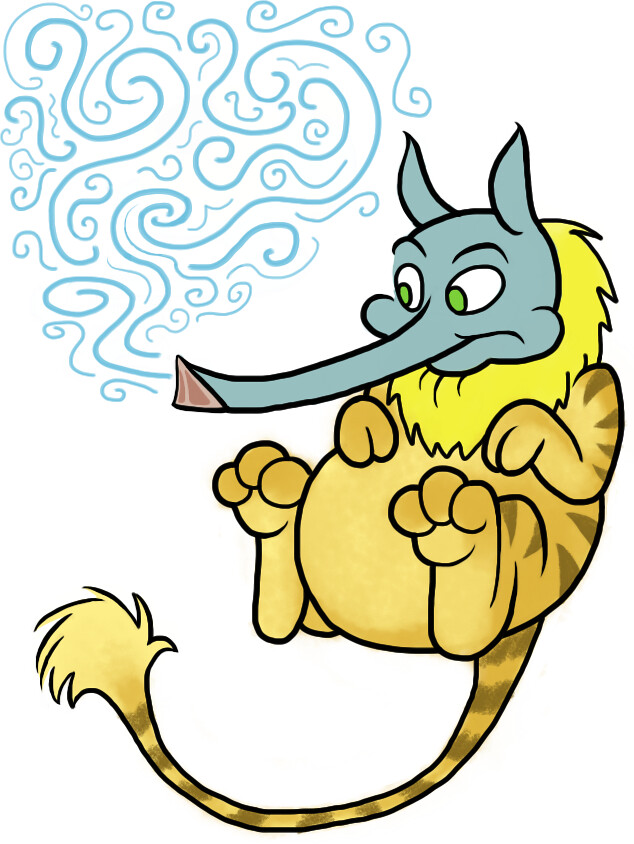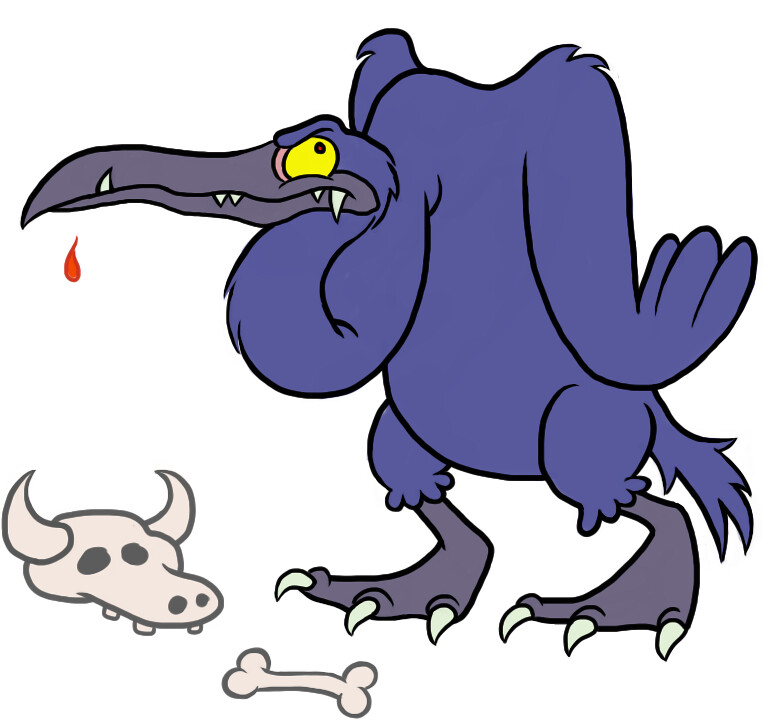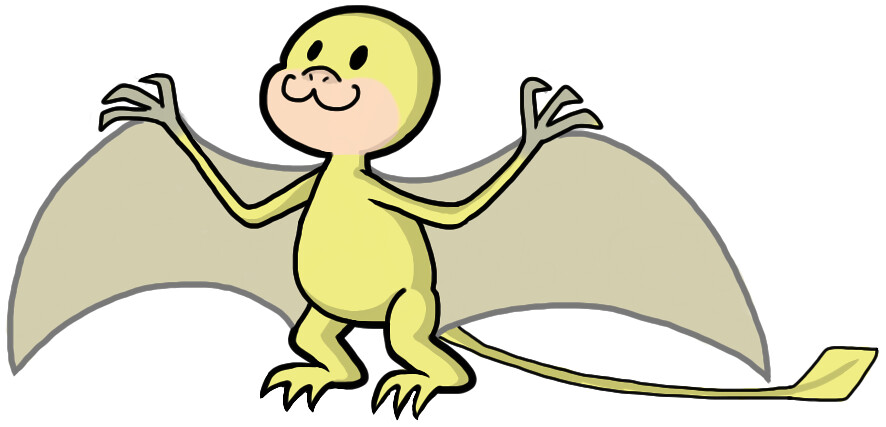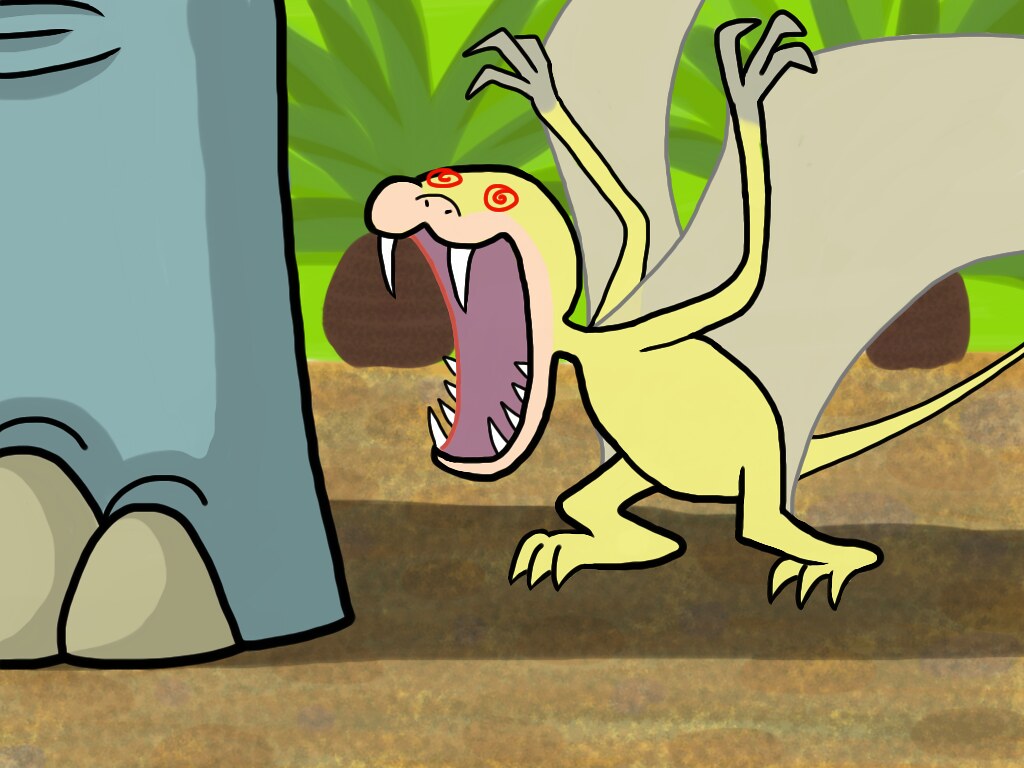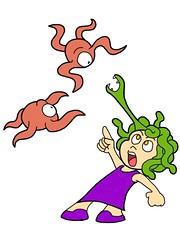Saturday, June 4, 2011
Kiwi
Hi guys, sorry about the lack of updates. I've still been drawing, I've just been busy with some new projects. The most notable of which is Art For... a live art charity event that will be held in Prague on June 25. Even if you're not in Prague, you can still download (or contribute to) the digital anthology for a small donation. All money will go to help Edge of Existence, that conservation group I always link to. So updates here will be sporadic until I get into the groove of running a charity (or until work ends for the summer and I have more time anyways).
Hey I just realized this is the second drawing I've done here of a bird that is also a fruit... maybe I should make that my "thing".
Saturday, May 7, 2011
Monday, April 25, 2011
The Dōjōji Serpent
This one took awhile to finish.
Long ago there was a priest who broke his vows and took advantage of a young woman. When he finally decided to end the relationship and abandon her, she was so infuriated that she transformed into a gigantic serpent and pursued him to his temple. The head abbots hid the priest under their giant bell, but the serpent caught his scent and coiled so tightly around the bell that it glowed red hot. When they lifted the bell all that remained of the priest was ash...
There are several variants on this story. Some have the priest as innocent, some have the girl as being misled about the priest by her father, and a great number of them end with the Buddhist equivalent of "women, am I right?" Buddhism doesn't have this reputation in the west where it is often considered to be more of a philosophical tradition than a religion, but the truth is a lot of Buddhist scripture has really questionable attitudes towards women. The variants of this story that appear in Japanese scripture use the serpent woman as a metaphor for how relationships with ANY women lead to tragedy because ALL of them are over-emotional monsters just waiting under the surface and will kill your spiritual career.
Unsurprisingly, there have been a number of feminist interpretations of this story as well. Pre-Buddhist Japan had a tradition of very powerful female shamans, and so the patriarchy had a very real reason to fear the "power" and "monstrous" energy inside the gender they had usurped. In this reading, the serpent woman isn't a villain, but a heroine to root for whose time will come again. She takes on the form of a serpent, representing both the female energies labeled "demonic" as well as the male phallic shape, to burn away hypocrisy in the new order.
I made the snake white because when I was thinking about this legend I mixed it up with a separate (but perhaps related? I'm no expert) snake lady from Chinese legend named Bai Suzhen. She was a white serpent demon who wanted to become a goddess by doing good deeds, but was hounded by a sorcerer who believed all demons to be pure evil that must be destroyed.
Sunday, April 17, 2011
Chinese Giant Salamander
Another day, another endangered amphibian. The Chinese giant salamander is the largest living amphibian in the world, growing up to a whopping 1.8 meters long. They are critically endangered due to over-harvesting for food. They are considered a delicacy in China and also a source for traditional "medicine". Sadly, these awesome creatures are not the only animal facing extinction due to Chinese over-consumption.
Friday, April 15, 2011
Poison Dart Frog
Poison dart frogs are gorgeous, vibrantly colored frogs from Central and South America. They get their name from the fact that many indigenous tribes used their toxins for blow darts. They are also critically endangered, having been decimated by the Chytrid fungus. They are also at risk from collectors, mostly from Germany and Japan, who are attracted to the rare frogs' beautiful colors and patterns.
Unlike some other amphibians, poison dart frogs don't lay a lot of eggs. As a result, they are very devoted parents, carrying their tadpoles piggyback from water source to water source. This lack of fecundity and the dependence on their parents is another reason why collectors are such a threat to the species. Millions of dollars worth of frogs are smuggled out of South America every day.
Collectors aren't the only reason these frogs are so valuable. Their skin contains more than just toxins. They contain chemicals that can be used to treat everything from cancer to Alzheimers to HIV. They are a shmorgishborg of useful and amazing chemicals, and as a result they are in high demand from pharmaceutical companies. Unfortunately, these chemicals and toxins are not innately created by the frogs, they come from the frogs' diet and environment. This makes captive bred frogs useless for research, hence the constant demand for new frogs off the black market. Now I would think that such dependence on biodiversity would encourage pharmaceutical companies to invest money in sanctuaries for these creatures and sustainable rainforests. That way they would have a continual supply of specimens without having to worry about running out or perpetuating an exploitative and illegal black market. But then that's why I don't run a pharmaceutical company.
So lets see, these frogs are adorable, beautiful and varied in color and pattern, caring parents, poster children for the interconnectedness of life, and could possibly save countless lives. Fuck the giant panda, these guys need to be the new face of conservation!
Wednesday, April 13, 2011
Desman
Today's critter is the desman, a semi-aquatic cousin of the mole. Only two species of desman exist today, the Pyrenean desman and the Russian desman. Both species are vulnerable due to pollution and illegal fishing nets. The desman uses its webbed hind legs and powerful tail to swim through the water as easily as its cousins burrow through the ground. However, the most interesting feature of the desman is its nose. This prehensile trunk features the same Eimer's organ at the tip that the star-nosed mole has. This allows it to reach into nooks and crannies under the water and feel for tasty insects, crustaceans and amphibians. Despite being functionally blind, this organ is so powerful that it can construct as mental picture of its surroundings based on touch alone. Think of him as the combination of Namor and Daredevil, only in tiny mole form.
The desman has a surprisingly complex system of society and communication that is only just now starting to be studied.
Saturday, April 2, 2011
Hopkinsville Goblin
On August 21, 1955 the most dramatic alleged alien encounter in history took place in rural Kentucky. Two families were besieged by a troupe of strange gremlins-like aliens that arrived in a mysterious craft. While only three feet tall, the strange silver creatures had huge dangerous claws and survived shotgun blasts. At times they appeared to float and walked with their claws held up and with a strange gait as though they were wading through water. The creatures never made it inside, but scrambled around the outside of the house. The goblins even scuffled with and grabbed at the farmers who ventured outside. Eventually the families escaped and went to the sheriff. When the police returned to the house they found extensive damage to the property, heard strange noises and saw mysterious lights (as well as notably finding no evidence of alcohol or drugs). The nearby households also heard the struggle and were distressed at the strange noises and lights. Even years later, the families, the police and their neighbors' stories corroborated under individual questioning. The families made no money off of their story and in fact fled the area after their story made them too popular with ufologists.
The strange goblins would appear a few more times, but none of these sitings would be as dramatic and intense as the night in Hopkinsville. Numerous explanations have been given for what the creatures might actually have been. They range from the boringly logical great horned owl to the as-unlikely-and-goofy-as-it-being-aliens escaped circus monkey that was also painted silver for some reason. To be honest though, the story of an army of great owls laying siege to a rural farm? That's just as cool.
Friday, April 1, 2011
I reversed the order. Today you get the doodle and after that you'll get the folklore update.
Today's drawing is actually the second drawing I did on my iPad way back in December. So like yesterday's update, this one isn't as nice as my more recent work. I did it for my friend Sarah, who was going through a hard time. It's a picture of her punching her anxiety monster in the face.
Thursday, March 31, 2011
Uploading a doodle every day this week means uploading a few old ones that I didn't feel were up to snuff before. This picture of Clione was one of my earliest when I first got Brushes for the iPad. As such, the linework isn't as nice as my more recent offerings. There's also one glaringly huge mistake that bugs the crap out of me. You may notice that one hand is significantly smaller than the other. Ugh.
Tomorrow will be a new entry into the folklore section and on Saturday I have another old doodle. After that I'm going to take a break to work on some more drawings, my paying art gig (more info soon) and my art charity event (more info even sooner).
Wednesday, March 30, 2011
Rich Mr. Pelican
Sorry about yesterday. The internet at my apartment sucks right now and it took forever to get anything uploaded.
Monday, March 28, 2011
Sunday, March 27, 2011
Captain Kit and the Singing Sword
Ugh, I am so LAZY. I've had this and several other drawings finished on my hard drive for over a week now and just haven't uploaded them. Well that's going to change. Enjoy a few daily updates this week.
Monday, March 21, 2011
Nue take Two
See? I told you I could do a better one. The nue is a fearsome monster from Japan, often compared with the Greek chimera for the way it combines attributes of three different creatures. It has the head and cruelty of a monkey, the body and strength of a tiger, and the tail and toxins of a serpent. Traditionally they are thought to bring misfortune and illness. The most famous account of a nue takes place in the Japanese epic The Tale of the Heike, where Emperor Konoe falls ill and suffers terrible nightmares after a dark cloud covers his palace. The legendary hero, Minamoto no Yorimasa staked out the roof and shot an arrow into the mass of darkness. Despite the darkness, the arrow found its mark and the corpse of the nue fell out of the cloud. The body was dumped into the sea, where it washed up on the shore of a small fishing village. Naturally, the villagers were shocked and buried the creature. Supposedly, you can still see the burial mound to this beast today.
As you may have noticed, I'm quite fond of Japanese monsters. I studied Japanese art and folklore at university and spent all together about a year and a half living in Japan. Japan is an important part of my own history, and Tokyo in particular is one of my favorite cities in the world. So as you can guess, I've been paying close attention to the news from there right now. Thankfully, all my friends in Japan have been safe so far, but a still I wouldn't feel right if I didn't remind everyone who stumbles upon this post that a lot of people there could use help. If you're not sure who to donate to, the Red Cross is always a good one. Doctors Without Borders is also a good choice. You can't donate to them specifically for Japan, but one of the reasons they've been so quick in response to disasters like in Japan and Haiti is because of long term funding and preparing.
I have lots of drawings this week, stay tuned.
Tuesday, March 8, 2011
In Progress: Nue
It's been awhile, but I haven't been resting on my laurels. Well, not the entire time at least. I'm working on a comic, which obviously takes a lot longer to do than these doodles I normally do (especially since I'm trying out a lot of new digital techniques I've never tried before). I'm also working on a charity project that I'll go into in more detail as I get closer to it. It'll be exciting stuff coming up, but not for a little while, so the update schedule is out the window. But I'm really proud of the work I've done here so far, so I'm not planning on ending it any time soon.
This sketch is one I was working on last week but didn't end up too happy with. It just doesn't fit together. I also think it looks too much like the manticore I did earlier (which isn't too odd since the nue is often compared to the manticore or chimera). I want the monsters I draw here to be interesting looking and not start falling back on the same designs I've done before. So I'm going to work on a different one and you'll get it online next week.
Wednesday, February 23, 2011
Wednesday Doodle: Bucky and Clione
I think I may need to rethink my updating schedule. Wednesdays are ridiculously busy for me right now. Its a good thing I had this doodle to ink over and slap some color on. Maybe I'll give Thursday a try next week instead...
Bucky you know, but this is the first the blog has seen of Clione. Clione is one of the characters who will be starring in the eventually forthcoming Bucky and Friends comics. She's a sea snail, specifically an anthropomorphic version of the sea angel family. Sea Angels are predatory snails that live in icy waters. Their feet muscles evolved into distinct wing-like flaps giving them a fairy-like appearance. In case you're wondering what happened to their shells, they actually do have them at birth but discard them early in their life cycle. That's the reason the order's scientific name is Gymnosomata, or "naked body" in Greek.
They are voracious hunters, devouring snails and sea butterflies with deadly tentacles that pop out of the top of their heads. See that red blob in Clione's head? That's her digestive system.
Monday, February 21, 2011
Andras
Goetia refers to the practice of invoking or evoking angels and demons. Today it most commonly refers to a specific grimoire known as The Lesser Key of Solomon, a 17th century text containing a catalog of spirits, both divine and demonic, that the legendary King Solomon had bound to serve humanity if summoned properly. The Goetia is a gold mine of fun monsters.
This cute little fellow is Andras, the Grand Marquis of Hell, the Killer of Men and the 63rd demon in the Lesser Key of Solomon. Andras is described as an owl, or a man with an owl head, riding atop a massive wolf. He wields a sharp flaming sword which he uses to sow discord (as well as the more conventional cutting and burning things).
Andras may not look like it, but he's one of the most dangerous demons a magician can summon. If the conjurer and his assistants to follow the Solomon's instructions exactly, he will kill them without a moment's hesitation. A single misstep out of the magic circle means the death of the magician, and Andras knows this. Andras reviles those who control him and will use any trick he can think of to lure them into dropping their defenses. Summoning him means a constant battle to maintain control.
Like all of the demons bound into servitude by Solomon, he is summoned to teach the magician some secret knowledge. As you might guess, Andras specializes in teaching magicians how to kill their enemies more effectively. He could also evoke an uncontrollable anger in people, useful for a magician who wants to incite a war or make an opponent careless. He commands 30 legions of demons and spirits in Hell, which he uses to spread dissent and chaos between people.
Saturday, February 19, 2011
Xenicibis
Xenicibis was discovered in Jamaica in 1977 by Storrs Olson. Its bone structure was so strange that Olson thought it must've had some kind of bone disease. In fact, the bird had extremely powerful weighted ends on its wings. Obviously, these wings were not very useful for flight, but they may have been especially useful for bashing predatory snakes or even monkeys and birds of prey. The size and weight of these wings means that xenicibis might have walked on them like crutches. If not use for defense, it may have been used in mock battles with members of its own species for territory or mates.
The bones that make up the clubs are hollow, like a baseball bat. This means they could dish out real damage without being too heavy to wield. The long "handle" at the joints meant that it could be swung very quickly and had a very far reach. Whether it was used to bash rivals or bash predators, it would have been quite a formidable weapon.
Non-ibis related: I've been thinking about how I want to update this blog, and I think its best if I do so on a consistent schedule. So from now on I will be updating with new drawings every Monday, Wednesday and Saturday.
Monday, February 14, 2011
Saturday, February 12, 2011
Thursday, February 10, 2011
Manticore
Meet the manticore, one of the classic bogey-men of antiquity. Manticores are originally from Persian legend, but quickly spread throughout Europe after they were mentioned in numerous Greek writings on natural history. Described as a massive red lion with the face of a man, the manticore was often blamed for people going missing. It devoured men whole, grinding them up with its three rows of teeth. Escape was difficult, as the beast had a deadly poisonous stinger on its tail and sometimes the ability to fire poisonous spines.
Throughout the Middle Ages, copies of such Greek works as Pliny the Elder's Naturalis Historia made the manticore and other monsters popular in heraldry and bestiaries. The original Persian legend had gone through so many translations and mistranslations that there were a number of different offshoots. Some bestiaries described it as being a male equivalent of the sphinx. Some more skeptical works identified it as a tiger. Some were intelligent, some were simple beasts, some were even musical, but nearly all were deadly.
Throughout the Middle Ages, copies of such Greek works as Pliny the Elder's Naturalis Historia made the manticore and other monsters popular in heraldry and bestiaries. The original Persian legend had gone through so many translations and mistranslations that there were a number of different offshoots. Some bestiaries described it as being a male equivalent of the sphinx. Some more skeptical works identified it as a tiger. Some were intelligent, some were simple beasts, some were even musical, but nearly all were deadly.
Wednesday, February 9, 2011
Tuesday, February 8, 2011
Monday, February 7, 2011
Mid-Monday Doodle: Bucky T. Weasel, self portrait
I'm working on some more drawings for mythology, paleontology and zoology posts this week, so in the mean time I'm going to upload some drawings I made when I was first testing out Brushes on my iPad. The line work isn't as polished as my more recent stuff, but its better than no updates at all.
I've come up with a LOT of original characters over the years. Detective Mummy, Nate and Wendy: Monster Rehabilitators, Bahiti the daughter of the Sphinx, the Incredible Edible Planet of the Clams, Templeton the clockwork salamander knight, and on and on. Most of them never got finished stories, but I like to "check in" on them from time to time, drawing some sketches to see how they've changed and what they've been up to since I last thought about them.
This character, Bucky, is one I've been drawing at least since fourth grade. Being a character I've drawn for so long, he's gone through many changes. Sometimes he's been more Looney Tunesian, sometimes lankier and more influenced by newspaper comics like Pogo or Calvin and Hobbes, sometimes he's been grungier and based more on the underground comics I used to trick my parents into letting me buy as a kid. There was that ill-advised period where I wanted to draw him "anime" in high school and then shortly after was when I learned what a furry was and I made him a human for awhile. My first attempt at doing a webcomic starred Bucky. Then in college I realized that I shouldn't try to shoehorn any characters into every story just because I'd been drawing them for a long time. Bucky slipped into the retirement, occasionally popping up as a doodle when I wanted to test out a new pen, but without any real plans or stories of his own.
I figure in all that time he's been keeping busy, reaching some of the same conclusions about his role in art as I did, and now he's finally comfortable with himself as a hip beatnik. He's someone who cares about art and about himself and is extremely confident as long as he doesn't stop talking or working to think about it. Once he does stop to think or reflect, that's when all the options and possibilities and doubts of the world creep into his mind. To his friends he may come across as narcissistic and flighty, but single-mindedly diving into an idea is just part of how he gets through life. I remember as a kid watching a PBS cartoon about a girl who had to recruit an army of weasels to help defeat an evil army of basilisks, but they were too timid and flighty unless they had gotten hepped up on a magic weed. This idea sort of inspired my idea of Bucky's personality. When I start uploading comics to this blog, some of them will definitely star Bucky and his friends in Carl Barks/Osamu Tezuka-style comedy/adventure stories.
Deciding what to draw in his self portrait was hard at first. I don't do much abstract art but I didn't want to end up overthinking it (which I'm sure anyone reading this will agree is something I do very often). Then I realized that Bucky isn't really a great artist, he just thinks he is and loves the process more than the result. He's not someone who would be able to plan a composition effectively. At his best he would be able to start one, but then invariably get distracted and muddle things. The question became "ok, so what kind of mistakes would he make in a painting?" and was a lot easier to come up with ideas. Then I decided I was overthinking it after all and finished up.
I've come up with a LOT of original characters over the years. Detective Mummy, Nate and Wendy: Monster Rehabilitators, Bahiti the daughter of the Sphinx, the Incredible Edible Planet of the Clams, Templeton the clockwork salamander knight, and on and on. Most of them never got finished stories, but I like to "check in" on them from time to time, drawing some sketches to see how they've changed and what they've been up to since I last thought about them.
This character, Bucky, is one I've been drawing at least since fourth grade. Being a character I've drawn for so long, he's gone through many changes. Sometimes he's been more Looney Tunesian, sometimes lankier and more influenced by newspaper comics like Pogo or Calvin and Hobbes, sometimes he's been grungier and based more on the underground comics I used to trick my parents into letting me buy as a kid. There was that ill-advised period where I wanted to draw him "anime" in high school and then shortly after was when I learned what a furry was and I made him a human for awhile. My first attempt at doing a webcomic starred Bucky. Then in college I realized that I shouldn't try to shoehorn any characters into every story just because I'd been drawing them for a long time. Bucky slipped into the retirement, occasionally popping up as a doodle when I wanted to test out a new pen, but without any real plans or stories of his own.
I figure in all that time he's been keeping busy, reaching some of the same conclusions about his role in art as I did, and now he's finally comfortable with himself as a hip beatnik. He's someone who cares about art and about himself and is extremely confident as long as he doesn't stop talking or working to think about it. Once he does stop to think or reflect, that's when all the options and possibilities and doubts of the world creep into his mind. To his friends he may come across as narcissistic and flighty, but single-mindedly diving into an idea is just part of how he gets through life. I remember as a kid watching a PBS cartoon about a girl who had to recruit an army of weasels to help defeat an evil army of basilisks, but they were too timid and flighty unless they had gotten hepped up on a magic weed. This idea sort of inspired my idea of Bucky's personality. When I start uploading comics to this blog, some of them will definitely star Bucky and his friends in Carl Barks/Osamu Tezuka-style comedy/adventure stories.
Deciding what to draw in his self portrait was hard at first. I don't do much abstract art but I didn't want to end up overthinking it (which I'm sure anyone reading this will agree is something I do very often). Then I realized that Bucky isn't really a great artist, he just thinks he is and loves the process more than the result. He's not someone who would be able to plan a composition effectively. At his best he would be able to start one, but then invariably get distracted and muddle things. The question became "ok, so what kind of mistakes would he make in a painting?" and was a lot easier to come up with ideas. Then I decided I was overthinking it after all and finished up.
Saturday, February 5, 2011
Baku
Today we have the baku, one of my personal favorite monsters from Japan. I've always liked chimerical monsters, they're always so interesting looking and fun to draw. Plus baku look great either as ferocious or as adorable. Today I've gone with adorable.
The baku is a dream-eating monster that devours nightmares and is therefore often beneficial to mankind. Because of this ability, baku were depicted on amulets to protect against nightmares or other sleep problems. Sleepers could even invoke a baku to come and protect them. Like many famous Japanese monsters, it is thought to have originated in Chinese folklore. The baku has been depicted in Japan since the Muromachi period (1336 to 1573). In ancient times it was usually depicted as a ferocious creature with sharp claws, huge tusks and glaring eyes. This appearance helped scare off demons and spirits that brought bad dreams. Of course, the idea of a monster that devoured dreams wasn't only used for feel-good happy stories. There are a few tales of baku that devoured all kinds of dreams, not just nightmares, leaving the poor sleeper restless and mad.
The classical baku is described as looking like a cross between an elephant and a tiger/lion. Today the elephant aspect (or indeed, the entire creature) is instead depicted as a tapir. Why the change? Well baku is also the Japanese word for tapir. The Chinese and Korean names for tapir also correspond to their forms of the legendary baku. Presumably, Asian zoologists thought that the Malaysian tapir's famous proboscis and its 50/50 split coloration was reminiscent of the legendary chimera. Japanese children were taught about the baku by their parents as a playful bedtime story. Young Japanese people growing up in the 20th century grew up hearing both uses of the word, and of course many of them went on to become filmmakers, artists or writers. The baku is, alongside the kappa, tanuki and tengu, one of the most common Japanese monsters to appear in modern pop culture, and so eventually the tapir-baku became the dominant archetype.
For an interesting non-traditional baku, I suggest checking out Satoshi Koh's excellent movie Paprika.
Thursday, February 3, 2011
Boobrie
The boobrie is a sinister water bird of Scottish folklore, said to resemble a gigantic loon or stork. The boobrie's diet is mainly carnivorous, with a particular fondness for the flesh of young calves. These are sneaky birds, and their method of hunting is actually quite ingenious by monster standards. The Scottish moors are home to any number of horrific man-eating beasts and so most farmers are well acquainted with the warning signs and methods of escaping any supernatural threat. When a boobrie spots a ship carrying young livestock down the river, it will rush at the ship roaring madly and transforming itself into a well known man-eater such as the each uisge (a horribly evil water horse) or the targh-uisge (an equally dangerous aquatic bull). When the farmers see such an infamous creature rushing at their ship, they assume it is after them and panic, often abandoning ship. While everyone prepares to escape the oncoming threat, the boobrie quickly changes back to its true form, grabs a calf in its beak, and dives into the water to feast.
While the boobrie prefers to hunt calves most of all, in times of need they will hunt adult cows, sheep, otters or occasionally human. For the most part, however, travelers in Scottland don't need to worry about boobrie attack unless they are attempting to transport livestock.
Tuesday, February 1, 2011
Purple Frogs
Today we're moving away from extinct animals and on to an animal is very much alive. For now. Meet the purple frog.
The purple frog is the only surviving member of its ancient family. These frogs lived alongside the dinosaurs 70 million years ago, but today can only be found on a tiny spot of Western Ghats, India where they spend most of their lives underground. They only emerge during the monsoon season.
As you can see, the purple frog is a tiny, goofy, bloated sack of fat with a tiny head and protruding nose. I fell in love with these silly looking living fossils and so I decided to sketch out a few different ways of drawing them in cartoon form. They just have such a lovable, un-frog-like old man face. I colored my favorites above.
Sadly, the purple frog is one of many amphibians currently at risk of extinction. Their habitat is being destroyed for cultivation. Thankfully, Edge of Existence, to whom I linked above, is currently working on a number of projects both to further research of this remarkable species and to help farmers find ways to co-exist with it.
For more pictures of this awesome frog, check out this gallery.
Monday, January 31, 2011
Linhenykus
Today's critter is the recently discovered dinosaur linhenykus, a two foot tall fellow from China. It is a member of the alvarezsauridae family, a group of dinosaurs that were originally believed to be birds due to their strikingly avian skeleton and muscle structure. All alvarezsaurids have tiny, stubby hands with huge claws, but linhenykus is unique. It only has one finger. No stubs, no vestigial bones, just two solitary fingers with large claws.
What's interesting about this is that linhenykus is not the pinnacle of alvarezsauridea evolution. Linhenykus was an early member of the family. A number of alvarezsaurids came after it with more fingers as well as some with just the one. This implies that these dinosaurs went through an ongoing process or gaining and losing the digits. While this discovery has helped to answer some questions about this dinosaur family, scientists are still not sure what exactly these tiny limbs were for.
One possibility is that linhenykus' unique single digits could have been used to dig for termites. The palms face downward which would make them very good digging and scratching tools.
Two notes about this picture. Real linhenykus, like all alvarezsaurids, had feathers. They were just hard to draw. The other thing is that as far as I know linhenykus did not have an elongated termite-eating tongue. I just started thinking about numbats and then I decided to run with it.
Sunday, January 30, 2011
Megaladapis
Today's prehistoric creature is the mighty megaladapis, the largest lemur ever to live! Yes, despite its considerable size and pig-like skull, megaladapis was a highly specialized lemur. Its short legs and long arms means it was adapt at climbing up large tree trunks and foraging leaves and branches like a modern day koala, earning it the common name "koala lemur". However, unlike a koala it was the size of a gorilla and had a long, flexible lip or proboscis with which to grasp food.
The Madagascar that megaladapis would have lived in was much different from today. It would have rubbed shoulders with all manner of strange lemurs, dwarf hippos, giant carnivorous fossas, and other long gone creatures. Megaladapis' forest specialization made it vulnerable to changes in its environment. When early humans arrived on Madagascar 2,000 years ago and began clearing the forests for farmland, the koala lemurs lost much of the habitat. The remaining giant lemurs were hunted to extinction only about 500 years ago. This is why we can't have nice things.
The extinction of the megaladapis was recent enough for them to live on in cultural heritage and oral traditions of the Malagasy people. In fact, the first western culture ever heard about these giant lemurs was from local legends about colossal wild beasts with strange, hauntingly human faces. Of course, megaladapis didn't have a remotely-human like face. It's pig-like skull and eyes that didn't face entirely forward would've been dead giveaways. It is believed that the local legends of the many different extinct lemurs got merged together over time into a creature with the size of the koala lemur and the face of its slightly smaller, more traditional primate cousins.
Today in parts of southern Madagascar, people occasionally report strange sightings of mystery creatures resembling large, man-sized lemurs. Does megaladapis or one of its fossil cousins live on? Cryptozoologists seem to think so, but lets be honest it doesn't really take much to get them going does it? Bless them.
The Madagascar that megaladapis would have lived in was much different from today. It would have rubbed shoulders with all manner of strange lemurs, dwarf hippos, giant carnivorous fossas, and other long gone creatures. Megaladapis' forest specialization made it vulnerable to changes in its environment. When early humans arrived on Madagascar 2,000 years ago and began clearing the forests for farmland, the koala lemurs lost much of the habitat. The remaining giant lemurs were hunted to extinction only about 500 years ago. This is why we can't have nice things.
The extinction of the megaladapis was recent enough for them to live on in cultural heritage and oral traditions of the Malagasy people. In fact, the first western culture ever heard about these giant lemurs was from local legends about colossal wild beasts with strange, hauntingly human faces. Of course, megaladapis didn't have a remotely-human like face. It's pig-like skull and eyes that didn't face entirely forward would've been dead giveaways. It is believed that the local legends of the many different extinct lemurs got merged together over time into a creature with the size of the koala lemur and the face of its slightly smaller, more traditional primate cousins.
Today in parts of southern Madagascar, people occasionally report strange sightings of mystery creatures resembling large, man-sized lemurs. Does megaladapis or one of its fossil cousins live on? Cryptozoologists seem to think so, but lets be honest it doesn't really take much to get them going does it? Bless them.
Saturday, January 29, 2011
Jeholopterus
Today's very special critter is a Chinese pterosaur from the Jurassic called jeholopterus. It was found perfectly preserved, even its hair and wing membranes. It had long grasping claws and a flat, cat-like face. Adorable, no? A flying ptero-kitty you could cuddle for hours.
Well be careful! A controversial suggestion by paleontologist David Peters is that jeholopterus behaved like a prehistoric vampire bat! Its long claws allowed it to cling to the sides of large dinosaurs and its wide-opening mouth let it thrust its strong fangs into thick skin to get to the delicious dinosaur blood within.
Peters has also suggested that jeholopterus may have had a long anglerfish-like lure on its head to help catch insects, so as you can imagine his ideas are hotly contested in the paleontology world.
History's cutest vampire or simple winged lizard-cat? We may never know for sure, but I salute brave little jeholopterus with these two pictures.
Update: It has been brought to my attention that Peters is not even a paleontologist but in fact an advertising artist who just likes making up bullshit. Apparently my dinosaur encyclopedia decided to just add his "theories" without including that last tidbit. Lame. I stand by my decision to draw jeholopterus as a vampire though, because it was fun and that is my main purpose here. But I don't want to mislead anyone about pterosaur facts, so mea culpa
Friday, January 28, 2011
Metoposaurus
One of my goals for this blog is to start consistently updating with drawings and information on a some of the fascinating extinct animals, folkloric monsters, cryptids and mythic figures I stumble upon. So for my first of what will hopefully be an ongoing thing is the ancient amphibian metoposaurus.
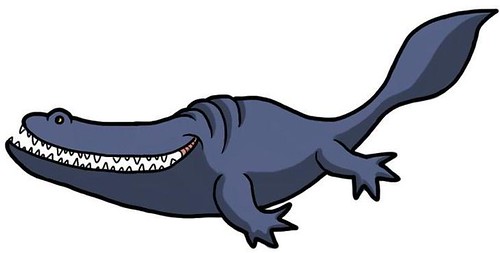
The metoposaur family was an extremely prolific group of amphibians that were successful long after the age of amphibians had ended. They hunted the lakes and rivers of the Triassic all the way up to the Cretaceous.Their remains have been found almost everywhere on the planet.
Metoposaurus was an 8-10 foot long fish-eating amphibian that probably prowled the bottoms of rivers or hunted mid-water like a modern day crocodile. They had large heads with their eyes further up on the skull that most amphibians. It was this feature (which I have exaggerated slightly) that made me want to draw them. The combination of their giant gaping mouth with their beady, far-forward eyes gives them such a lovable, goofy countenance.
- Posted using BlogPress from my iPad

The metoposaur family was an extremely prolific group of amphibians that were successful long after the age of amphibians had ended. They hunted the lakes and rivers of the Triassic all the way up to the Cretaceous.Their remains have been found almost everywhere on the planet.
Metoposaurus was an 8-10 foot long fish-eating amphibian that probably prowled the bottoms of rivers or hunted mid-water like a modern day crocodile. They had large heads with their eyes further up on the skull that most amphibians. It was this feature (which I have exaggerated slightly) that made me want to draw them. The combination of their giant gaping mouth with their beady, far-forward eyes gives them such a lovable, goofy countenance.
- Posted using BlogPress from my iPad
Saturday, January 15, 2011
Subscribe to:
Posts (Atom)
